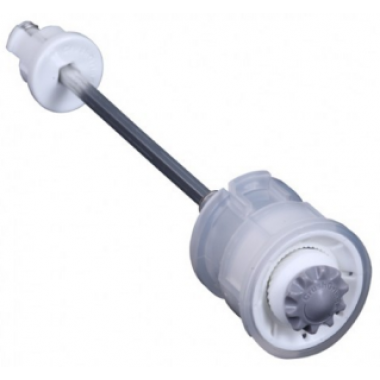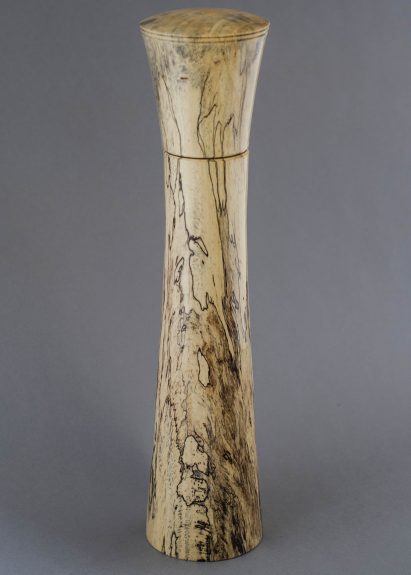A Joy to Use
These pepper mills will make you happy every time you cook. They might even make you happy just sitting in your kitchen.
CrushGrind Mill
The ceramic CrushGrind mill mechanism is simply the best grinder you will ever use. There are name brand steel mill mechanisms that have done a great job marketing, and I'm sure they are mechanically excellent. But once you've used a CrushGrind mill you won't want to use your Peugot mill again.
As a cook, what I like best is the mill action. You can easily set it to a certain grind and it gives you what you want in pepper size. There's no slop and no drift. Better still, the mill is very efficient. With every turn of the mill you feel a good solid grind. You can grind a lot of pepper in a short time. But honestly, I just love how these mechanisms feel when I'm grinding pepper or salt.
Steel mill mechanisms will corrode in contact with salt. Ceramic is inert to salt. So this mill can be used as easily for salt as pepper. And the feel grinding salt is just as nice as grinding pepper. Efficient and positive.
There is one more final distinction that sets the CrushGrind mill apart, and that's how it handles big peppercorns. Penzey's Extra Bold Indian Black Peppercorns are just incredible. Only ten pounds out of every ton of pepper get selected. But they are too large for many steel mills and grind unevenly. The CrushGrind mill handles these special peppercorns with aplomb.
I know I sound like a salesman, but I really like this mill mechanism!
The finish
For the most part I'm pretty well adjusted mentally. But I've got a thing about finishes.
When I did my first show, it surprised me how tactile my customers were. They would look at my stuff and come and pick up a piece, but once they held it they'd just get this look on their face as if they'd seen a ghost! I'd find they weren't expecting to have the feel they got from this piece of wood.
I keep that experience in mind as I develop new finishes. It takes longer to put a final finish on the mill than actually turn it. I've tried to find shortcuts, but I keep coming back to the same time-consuming methods.
Oil and wax generally work best on dark woods. After a good sanding and many coats of oil and wax, the wood character just pops out and the mill has a silky feel to it. For lighter woods I like a water-based spray finish normally used on instruments like violins. This finish doesn't yellow wood like oil, and it keeps spalt lines from bleeding. So the mill has a nice protective coat that doesn't detract from the light wood and its distinctive characteristics.


